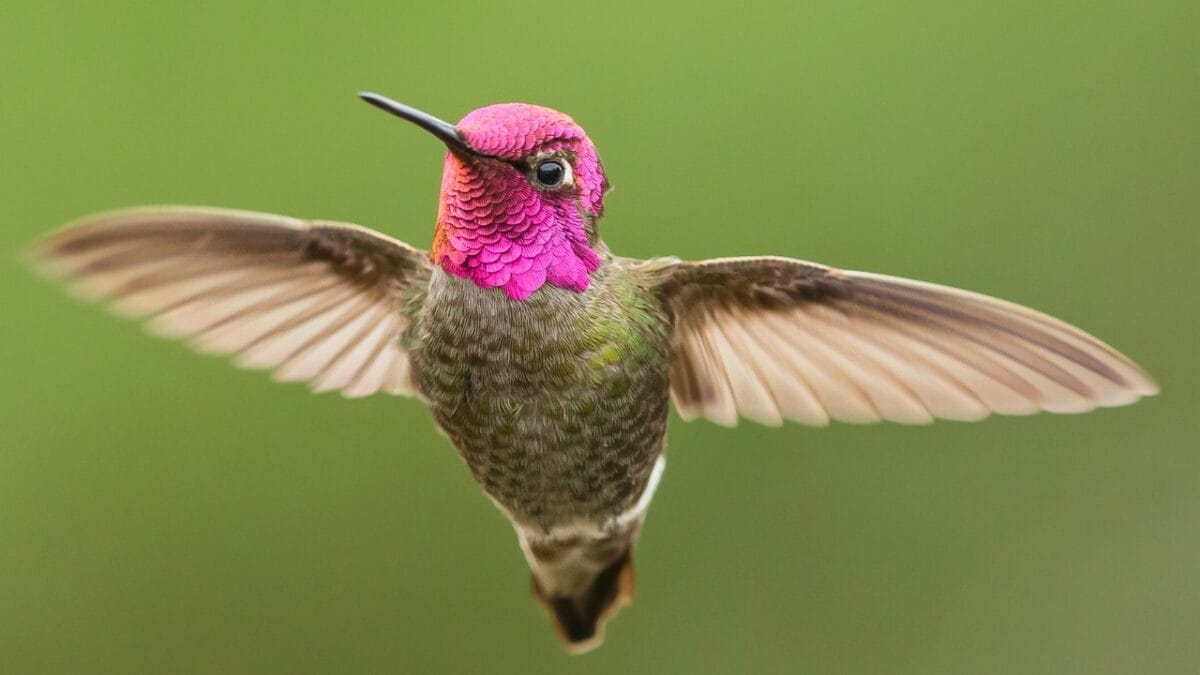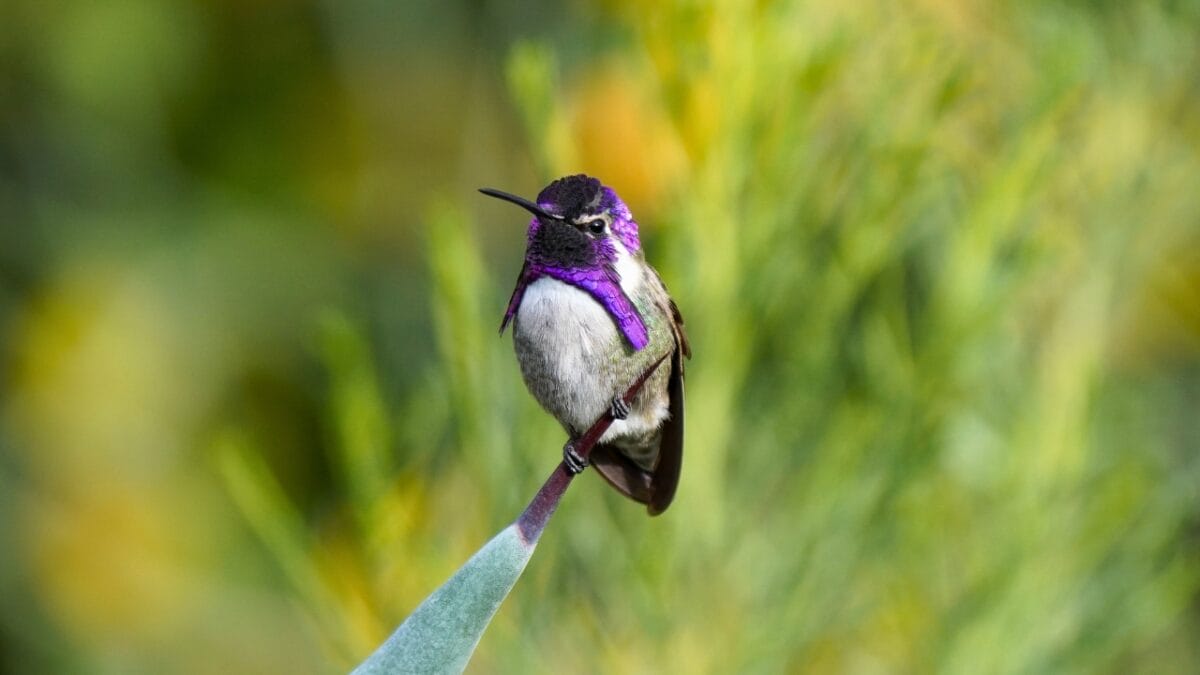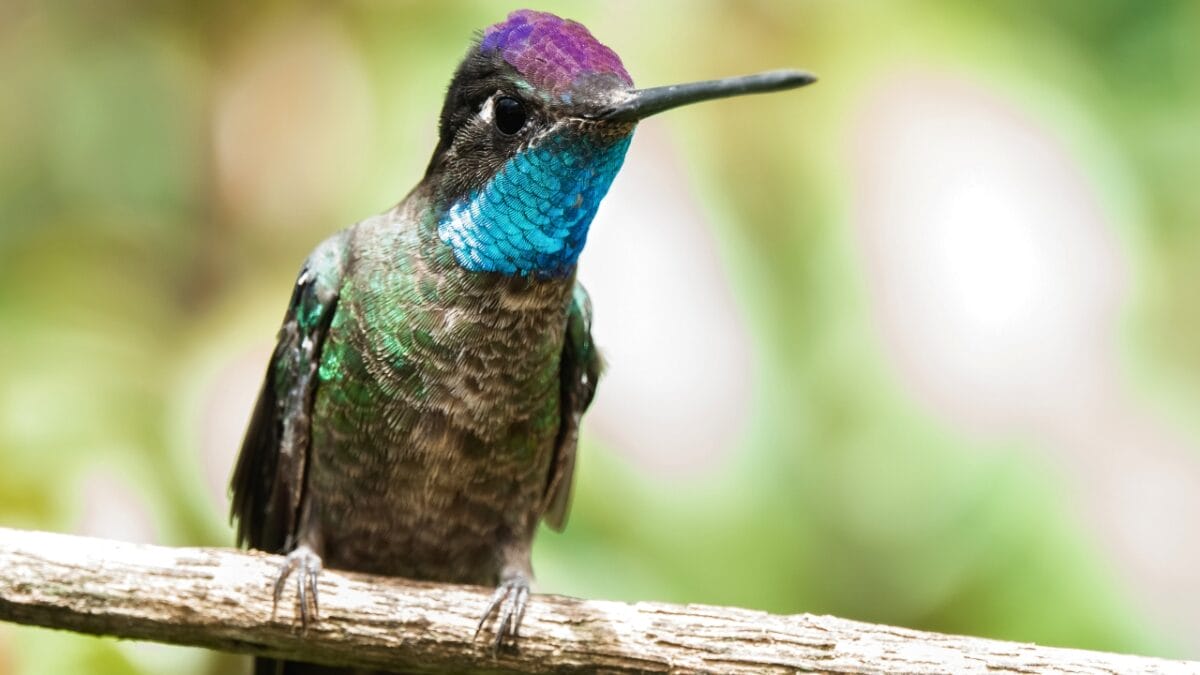The iridescent blur zipping past your window may just be one of nature’s most stunning aerial acrobats: the hummingbird. Despite their diminutive size, these tiny dynamos leave an outsized impression on bird enthusiasts and casual observers alike.
Whether you’re in the sweltering South or the arid West, there’s always a chance to catch a glimpse of these colorful pollinators. Here’s a guide to ten hummingbirds you can find across the U.S. and where you should head to see them.
1. Ruby-throated Hummingbird

Where to find them: Eastern and Central U.S.
The Ruby-throated Hummingbird is the only species that breeds in the Eastern U.S., making it a familiar sight from the Gulf Coast to the Canadian border. Males are easily identifiable by their vivid red throats, while females and juveniles sport a more subdued greenish hue.
These speedsters migrate annually, covering up to 500 miles nonstop across the Gulf of Mexico in a single flight.
To see them up close, set up a feeder filled with sugar water, especially during spring and fall migrations. Alternatively, head to wooded areas, gardens, or parks with plenty of flowering plants.
2. Black-chinned Hummingbird

Where to find them: Southwestern U.S., Texas, and into the Great Basin
Sporting a distinctive black chin bordered by a purple band, the Black-chinned Hummingbird is a regular in the arid southwestern states and Texas. These adaptable birds are happy in deserts, gardens, and urban areas alike, particularly where flowering plants or feeders are available.
Though males are often territorial, the species tends to form small groups when feeding. If you’re in the West, especially along the Rio Grande or the canyons of Utah, listen for their distinctive ‘tik-tik’ calls as you scan the skies.
3. Anna’s Hummingbird

Where to find them: West Coast and parts of the Southwest
Anna’s Hummingbird, one of the larger species in the U.S., can be spotted year-round along the Pacific Coast from southern California to British Columbia. The males’ iridescent pinkish-red heads and throats make them unmistakable, while females boast a subtler green crown and grayish undersides.
These birds are famous for their elaborate courtship displays, where males ascend up to 130 feet before diving down in a dramatic arc, often producing a sharp ‘chirp’ with their tail feathers. Look for them in coastal scrub, gardens, and parks with a good selection of blooming plants. (ref)
4. Rufous Hummingbird

Where to find them: Western U.S., from Alaska to Mexico
With their striking orange plumage and reputation for long migrations, Rufous Hummingbirds are quite the adventurers. They breed as far north as Alaska and make their way south to Mexico for the winter, often stopping by feeders and gardens en route.
While both sexes share a rufous (reddish-brown) back, the males stand out with a glittering orange-red throat. Spot these fiery travelers in mountain meadows, coastal forests, and backyard feeders from the Pacific Northwest to the Rocky Mountains.
5. Broad-tailed Hummingbird

Where to find them: The Rocky Mountains and Southwestern U.S.
A high-altitude specialist, the Broad-tailed Hummingbird is a common summer visitor to the mountainous regions of the Western U.S. and Mexico. The male’s iridescent rose-colored throat contrasts with its metallic green body, while the female sports a less flamboyant appearance.
Keep your eyes peeled in montane meadows, alpine gardens, and forest edges from Colorado to New Mexico. Listen for their unique metallic trill, created by their wingbeats, as they zip past wildflowers and feeders.
6. Costa’s Hummingbird

Where to find them: Southwestern U.S., especially California and Arizona
Known for their vibrant violet crowns and gorgets, Costa’s Hummingbirds thrive in the deserts of the American Southwest. Males exhibit an eye-catching iridescent purple head and throat that extends down to the sides of their neck like a helmet, while females are grayish-green with a subtle purple wash.
They are most commonly found in dry washes, desert scrub, and coastal sage scrub regions from California to western Arizona. Their distinctive song is a high-pitched whistle that you’ll often hear before seeing these desert beauties.
7. Calliope Hummingbird

Where to find them: Northwestern U.S. and Western Rockies
The Calliope Hummingbird holds the title of being the smallest breeding bird in North America, weighing in at just 0.1 ounces. (ref) Despite their tiny stature, the males make a big impression with their magenta streaks radiating from their throats.
During their breeding season, these hummingbirds prefer montane forests and subalpine meadows. For winter, they migrate as far south as Central America. For a close encounter, head to the higher elevations of the Rockies in summer or set up a nectar feeder on their migration route.
8. Allen’s Hummingbird

Where to find them: Coastal California
Closely resembling the Rufous Hummingbird, Allen’s Hummingbird is a distinctive West Coast species that breeds mainly in coastal California. Males are known for their bright coppery plumage and greenbacks, while females are mostly green with a few rufous tinges.
During their breeding season, males engage in spectacular display flights to attract mates. Spot them in coastal scrub, urban gardens, and parks, particularly from southern California up to Oregon.
9. Buff-bellied Hummingbird

Where to find them: Texas Gulf Coast and into Mexico
The Buff-bellied Hummingbird, known for its warm, buff-colored underparts, has a limited range along the Gulf Coast of Texas and into northeastern Mexico. Males have iridescent emerald-green throats and rufous tails, while females share similar features but with more subdued colors.
Look for these unique hummingbirds in woodlands, gardens, and coastal thickets. They are particularly active during migration seasons when they head to the southern tip of Texas or the Yucatan Peninsula.
10. Magnificent Hummingbird (Rivoli’s Hummingbird)

Where to find them: Southwestern U.S. and Northern Mexico
The Magnificent Hummingbird, now called Rivoli’s Hummingbird, is one of the largest hummingbirds in the U.S. Males sport a stunning emerald-green throat and violet crown, while females display more muted hues.
These forest dwellers prefer the pine-oak woodlands and high-altitude regions of Arizona, New Mexico, and northern Mexico. To catch a glimpse of this regal bird, head to hummingbird hotspots like the Chiricahua Mountains or Madera Canyon in Arizona.
The hummingbirds of the U.S. represent a dazzling array of colors, shapes, and behaviors that captivate all who encounter them. From the vivid Ruby-throated to the majestic Rivoli’s, each species offers a unique glimpse into the fascinating world of these feathered gems.
Whether you’re in a desert canyon or a garden on the East Coast, keep a feeder filled and your binoculars handy—you never know when a tiny dynamo will zip by and brighten your day.
Davin is a jack-of-all-trades but has professional training and experience in various home and garden subjects. He leans on other experts when needed and edits and fact-checks all articles.

